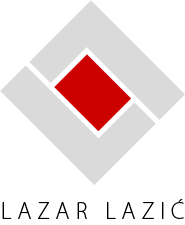A long time ago, between the two great wars, a simple farmer from a homestead in the heart of Vojvodina bought himself a camera. That was my grandmother’s brother – my great-uncle. Then came my father, starting in the late 1950s – with a Kiev and a Zorki, and later, a Nikon. My mother, an art professor, taught me about colors and composition.
I truly began working with photography at the dawn of the 21st century. Some might say it’s in the genes – albeit a bit late to kick in.
If I borrow Henri Cartier-Bresson’s words, that our first 10,000 photos are our worst, I can say I’ve long surpassed that number – but I’m still not completely satisfied. That, at least, I can work on. Time, unfortunately, I cannot – I dedicate only a fraction of it to the art of writing with light. I console myself with Ansel Adams’ words that 12 great photographs a year is a good crop.
Photography demands movement in order to reveal itself. Nothing happens when you sit at home (Elliott Erwitt). Reaching places others don’t, seeing what’s rarely seen – that was one of my guiding ideas. Like in any profession, one should strive to be a little different, to be original. You’ve got to push yourself harder. You’ve got to start looking for pictures nobody else could take. You’ve got to take the tools you have and probe deeper (William Albert Allard).
Nothing can replace the company of my father, with whom I traveled across Vojvodina far and wide. He knew it, especially the rural parts, in great detail. He knew what was worth seeing, where things were hidden. It was up to me to shape it with light, to look for new frames, new angles. If I saw something in my viewfinder that looked familiar to me, I would do something to shake it up (Garry Winogrand). A part of me left with him, and a part of him stayed with me.
As you may have already guessed, my name is Lazar Lazić. I’m a geographer and a university professor. Among other subjects, I teach the Fundamentals of Photography as a Visual Tool in Geography.
One might wonder where the connection between geography and photography comes from. Geography and photography have a strong and multi-layered connection, as both disciplines record and interpret space in their own way. In a way, photography is visual geography – it shows what maps and words often can’t. Through images, we can "read" space: topography, architecture, climate conditions, ways of life, and even social inequalities.
